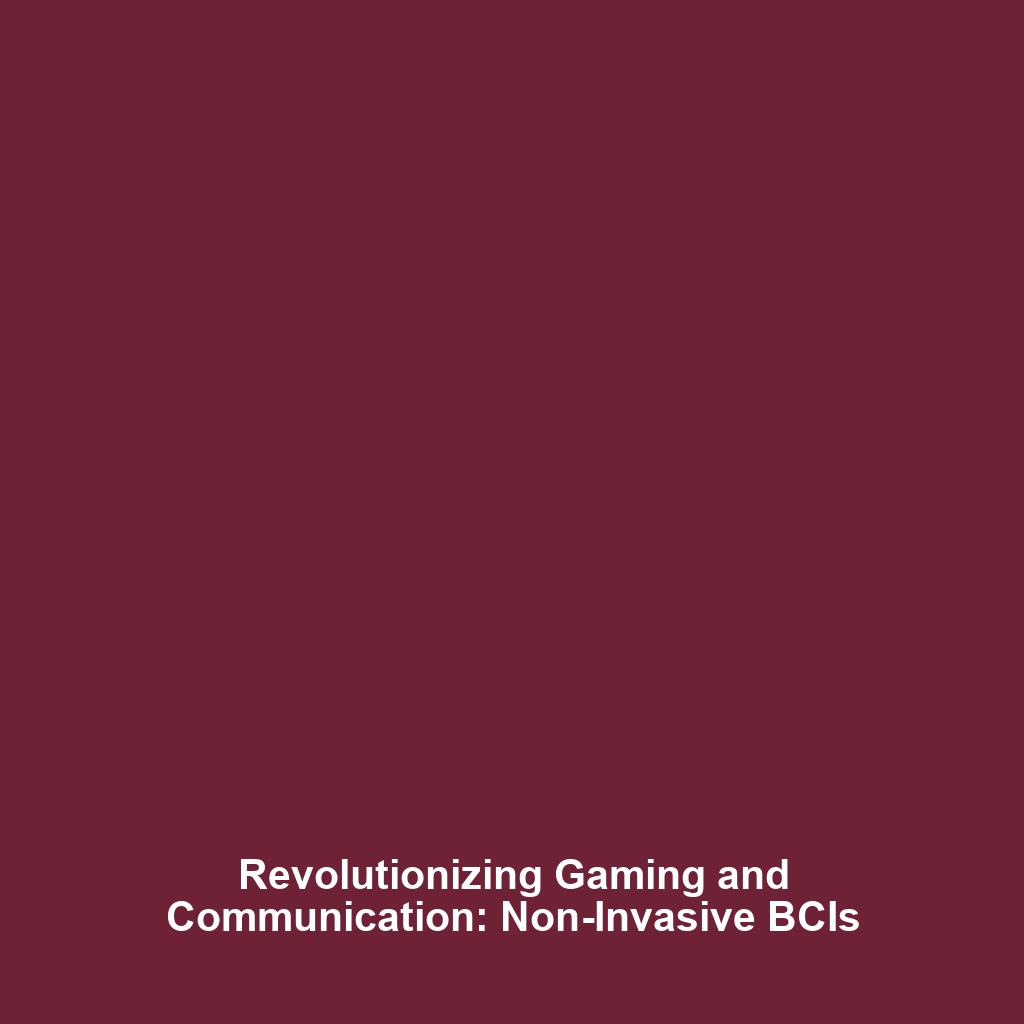Data Privacy and Security in Brain-Computer Interfaces
Introduction
As Brain-Computer Interfaces (BCIs) evolve and become increasingly integrated into everyday life, understanding data privacy and security becomes crucial. This technological development has the potential to revolutionize how humans interact with machines, but it also raises significant concerns regarding the safeguarding of personal neurological data. With BCIs capable of interpreting thoughts and intentions, the implications for privacy are profound. In this article, we will explore the importance of data privacy and security in the context of BCIs and highlight key concepts, applications, and emerging challenges.
Key Concepts
The Framework of Data Privacy and Security
Data privacy refers to the appropriate handling, processing, and usage of personal data, ensuring that individuals have control over their own information. In the realm of Brain-Computer Interfaces, this includes the data generated from neural activities, which can be particularly sensitive. Key principles include:
- Consent: Users must be informed and provide explicit consent for data collection.
- Data Minimization: Only necessary data should be collected to reduce exposure risks.
- Security Measures: Robust encryption and secure storage methods to protect information.
Applications and Real-World Uses
The practical applications of data privacy and security in Brain-Computer Interfaces are vast:
- Healthcare: BCIs are being developed for therapeutic purposes, allowing paralyzed patients to control prosthetic limbs through thought. Ensuring data privacy is essential to protect sensitive medical data.
- Gaming and Entertainment: Companies are exploring BCIs for immersive gaming experiences, which require secure user data handling to maintain trust.
- Workplace Productivity: BCIs designed to enhance focus and creativity must tackle privacy concerns related to employee data.
These examples demonstrate how data privacy and security are directly tied to the responsible deployment of BCIs. Understanding how data privacy is used in Brain-Computer Interfaces can guide developers and users toward ethical usage.
Current Challenges
Despite advancements, several challenges remain in data privacy and security within Brain-Computer Interfaces:
- Insufficient regulations governing BCI data.
- Complexities surrounding user consent due to the nature of neural data.
- Risk of data breaches, potentially exposing sensitive information.
- Challenges in ensuring interoperability between different BCI devices and platforms.
These challenges of data privacy underscore the need for enhanced solutions and regulatory frameworks in the burgeoning field of BCIs.
Future Research and Innovations
Looking ahead, research in data privacy and security is gearing toward innovative solutions to enhance user protection in Brain-Computer Interfaces. Key areas of focus include:
- Development of Secure Protocols: Creating standardized methods for data encryption specific to neural data.
- AI-Driven Privacy Solutions: Implementing artificial intelligence for real-time monitoring and data protection.
- User-Centric Privacy Controls: Developing interfaces that allow users to easily manage their privacy settings.
These innovations not only promise to improve the safeguarding of personal data but also could enhance user acceptance and integration of BCIs into society.
Conclusion
Data privacy and security are paramount considerations in the development and deployment of Brain-Computer Interfaces. As technology evolves, stakeholders must prioritize the protection of sensitive data to foster public trust and ethical use of BCIs. To stay informed on this rapidly advancing field, consider exploring our articles on related topics for deeper insights.

